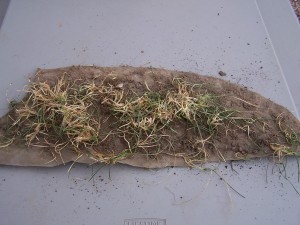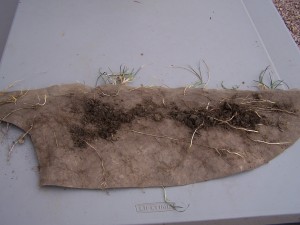Control Weeds with a Strong Weed Barrier (Landscape Fabric)
Over the years I have seen several types of weed barrier (landscape fabric) fail and when they fail it’s quite a job to fix the problem. First you begin to see a lot of weeds and grasses coming up all over your landscape area, then you realize that the weed barrier has failed. All of the mulch needs to be removed and new weed barrier needs to be installed. This is costly and labor intensive.
If your landscaping project is old or new, use good quality weed barrier and install it the right way. I use Typar weed barrier 3oz spun bound polypropylene or Dewitt 4.1 woven needle punch polypropylene fabric. I never use any weed barrier lighter than 3oz even though these companies make lighter fabric. Most of the time you will only find this weed barrier at your local nurseries or online. Avoid buying weed barrier at your local stores unless they are good quality, most of the time they are not.
Your landscaping fabric should meet the following requirements.
- The weight – 3.0 oz
- Tensile Strength – 135 lbs
- Elongation Strength (%) > 70
- Puncture Strength (lbs) 35
- Thickness 15.0 mils
- Permitivity (Sec – 1) 1.2
- Typically black or charcoal in color.
- Check the name brand.
When you install the weed barrier overlap the seams by 4” to 6”, lap the fabric up against your edging or structure, and use 6” U Staples to hold it down. When placing the fabric around your plant material, cover around the bottom of the plant but don’t make it tight around the trunk. (NOTE:) Never use plastic, the plants can’t breathe or get water around the root ball.
Below is a example of landscaping fabric that has failed. Look at how the weeds have grown through the fabric.


How easy is it to install a sprinkler system?
I’m sick of paying outrageous sprinkler repair bills!
See Also:Landscape Edging How To
